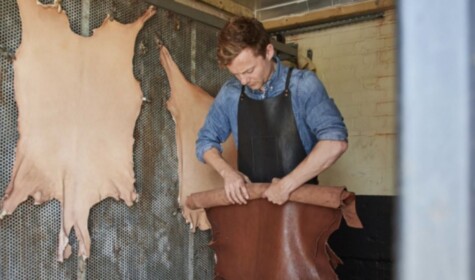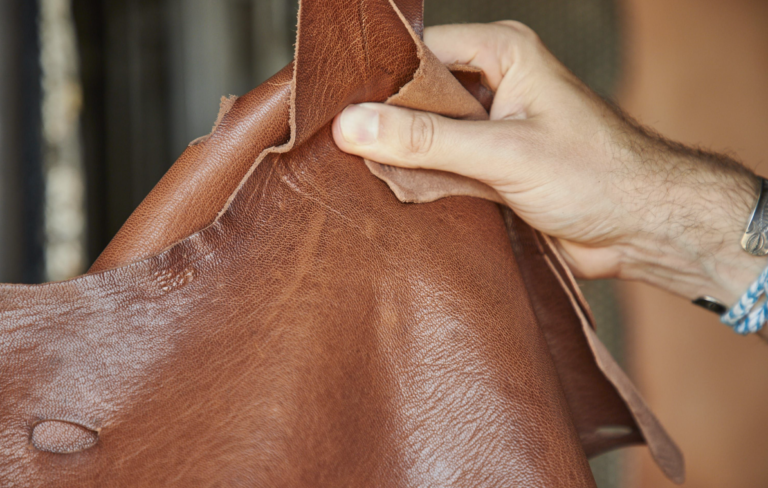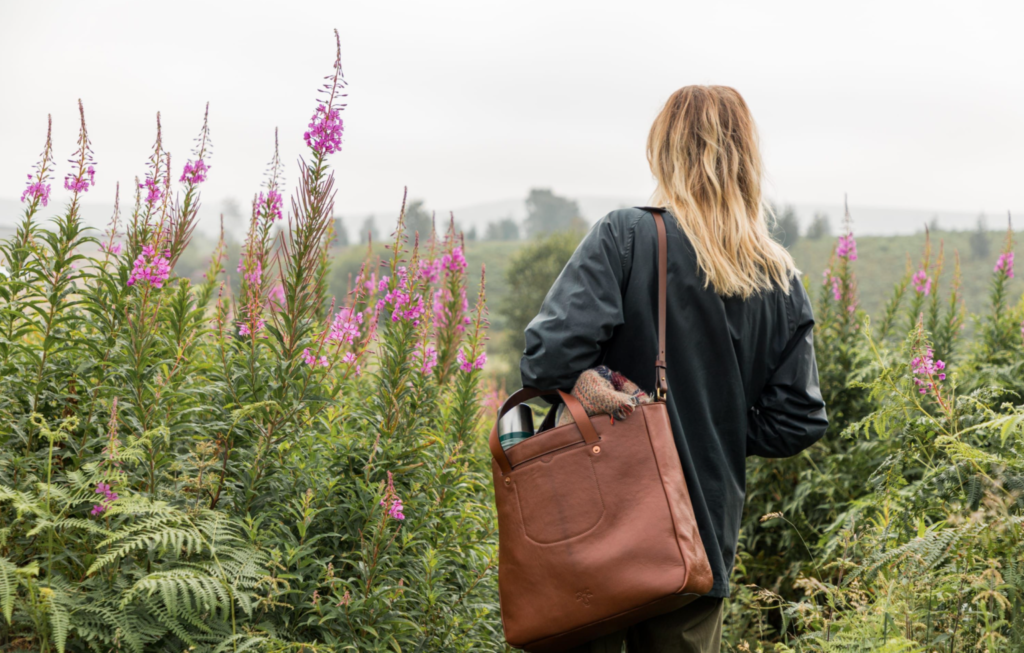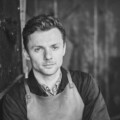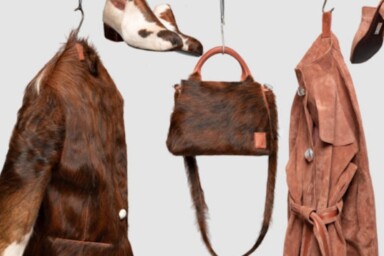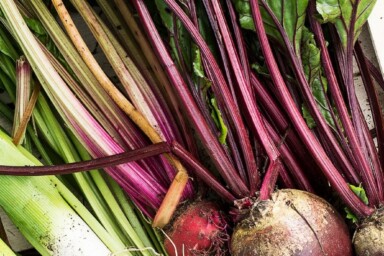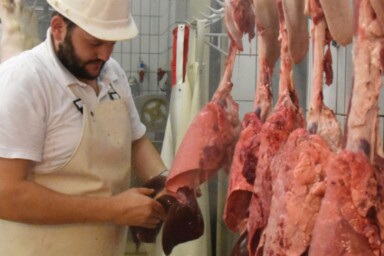The Billy Tannery story began when founder Jack Millington made a discovery. Despite steady growth in goat dairy and more recent strides in ethical goat meat production in the UK, not one goatskin was being tanned into leather here. Due to massive decline in the UK leather industry, there were no tanneries left that could take goatskins and most were sadly destroyed. The son of a dairy farmer, Jack and his business partner Rory Harker have recreated a traditional supply chain, turning the previously wasted hides into leather and leather goods from their farm-based tannery in the Midlands. They now have their sights set on helping solve a widespread waste problem with other hides and skins from UK farms.
A rose-tinted view of the past can make us overly nostalgic, but sometimes the old ways really are the best. For thousands of years every British town or even village would have had its own tannery, but as the Industrial Revolution took hold and the drive for scale and efficiency increased, leather became more and more commodified. Gradually this started a race to the bottom, with UK tanneries competing to produce the cheapest leather – a race they simply couldn’t win when competing globally with tanneries in countries with much lower labour costs and practically non-existent environmental controls. As described in a recent article by Sara Grady and Alice Robinson, there are only a handful of British tanneries left and many thousands of hides and skins end up either burned or in landfill. This was the landscape that I discovered back in 2014 when I began looking for a way to make use of the increasing number of goatskins in the UK.
When you think of British farm animals, goats might not be the first that come to mind. While tiny in comparison to the cow dairy herds, there are an estimated 50,000 milking goats in the UK. Many people swear by the nutritional benefits of goat dairy products and brands such as Delamere Dairy can be found in every supermarket in the country. However, despite goat being the most widely eaten red meat in the world, it is not a mainstream ingredient in the UK. This lack of demand leads to the uncomfortable question of what do with the thousands of male dairy goats – around half of the goats born on UK farms each year. Sadly, for economic reasons the only answer has been to euthanise the male kids at birth, but the tide is thankfully starting to turn. Efforts such as those by James Whetlor, founder of Cabrito Goat Meat and the annual Goatober campaign, are steadily increasing the demand for this delicious healthy meat in the UK and so helping end the terrible waste.
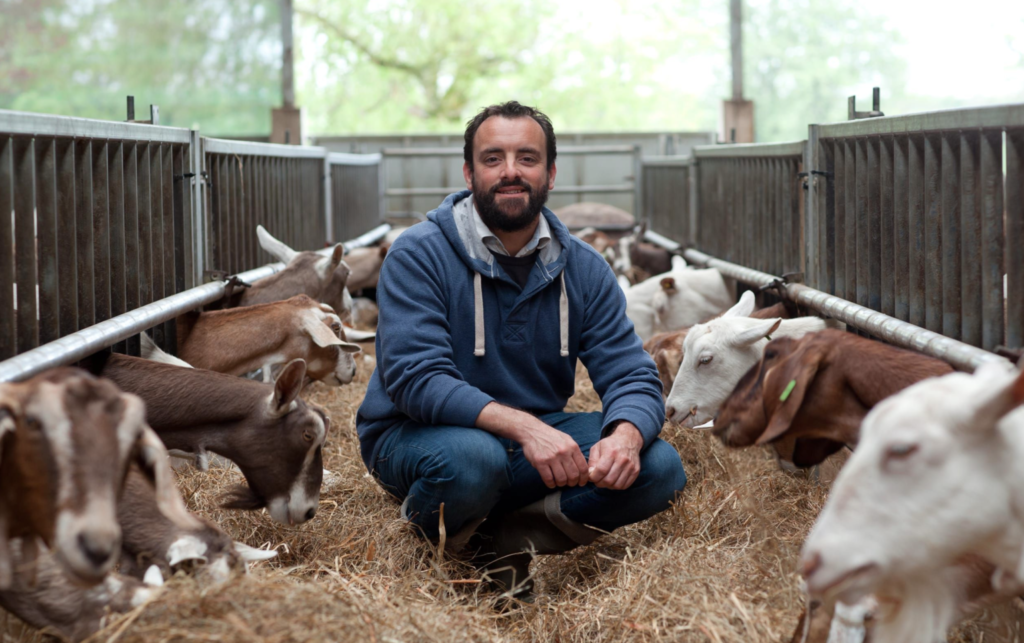
It was a call with James that changed everything for me. Having given up dairy farming in the 90s, my father decided to try his hand with a few goats that quickly turned into a herd. As a side-project from my career in marketing, I agreed to help him find some local restaurants to supply the meat to and, as an afterthought, see if we could get the skins tanned. The meat was a hit but with tanneries all I found were closed doors. Those left were entirely focused on cow hides and had neither the equipment nor desire to work with goatskins. I had come across Cabrito while trying to sell our own meat, so I tweeted James to ask what he did with his leftover skins. One phone call later and James had offered me all of the thousands of Cabrito goatskins currently going to waste, if I could find a way to tan them.
In the end the solution was closer to home than I had ever imagined and was only possible due to a stroke of geographical luck and the support of a few very patient people. After months and months of dead ends, I was put in touch with Paul Evans, then Senior Lecturer at the University of Northampton. It turned out that just thirty minutes from my family’s farm in Leicestershire was the globally renowned Institute of Creative Leather Technologies (ICLT) and Paul and his team were really excited to tell me about the idea of a farm-based micro-tannery. It should be stated that at this stage I had no idea quite how much time, money and energy this would require, but the seed had planted firmly, and the planning and learning began.
It has been nearly seven years since that original phone call with James, and Billy Tannery has come a long way. Thanks to hundreds of crowdfunding backers, we not only built our own tannery, but recently relocated it to a new, larger site near Oakham. The range of products that we make from our goat leather is growing steadily, including bespoke items for restaurants that complete the circle entirely.
When in 2020, we needed funding to continue our growth, we were delighted when Delamere Dairy came forward to invest and we joined Cabrito as part of the Delamere family. Together our vision is one of a fully circular system from milk to meat to leather with as little waste as possible – and the future looks incredibly exciting.
Working with leather sustainability expert Karl Flowers of Authenticae, this year our goal is to maximise the circular methods of our tannery by studying all of the inputs and outputs. We already have a process in place to make it safe and beneficial to irrigate our tannery’s wastewater on the surrounding grassland and the next step is to make use of other waste products in our tanning process. Early studies on extracting tannins from food and drink waste have been really promising and will hopefully play a big role in further promoting leather’s vital place in the wider agricultural cycle.
While our focus will always be on goat leather, a week rarely goes by without someone contacting us to ask if we can tan hides or skins for them. What’s clear is that the current system in the UK is broken. Farmers and food businesses nationwide are crying out for a way to stop hides and skins going to waste, but as we have found it’s an uphill battle with gaps all the way along the supply chain and question marks over what to do with the leather even if you can tan it. While we, unfortunately, aren’t able to contract tan for others, what’s clear is that collaboration is key to solving systemic issues. In a project with furniture maker Sebastian Cox, we recently tanned our first cow hides, a pair of English Longhorn cattle from a regenerative UK farm. We’re also delighted to announce that Billy Tannery will be collaborating with Grady + Robinson to use our tannery and sustainable methods to make use of sheepskins that are also currently going to waste. Watch this space!
